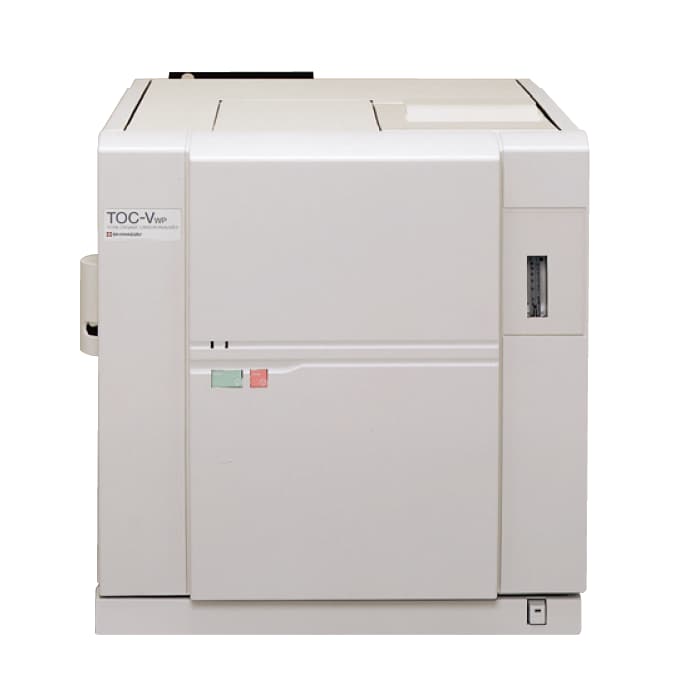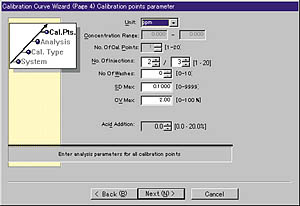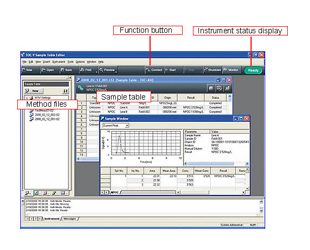TOC-VWP
Wet Oxidation TOC Analyzer
Measurement Principle
TC Measurement
Phosphoric acid and the oxidant (persulfate) are added to the sample, which is heated under UV illumination to convert the TC in the sample to carbon dioxide. This carbon dioxide flows with the carrier gas via the dehumidifier into the NDIR sample cell. The area of the carbon dioxide peak signal is measured and this peak area is converted to TC concentration using a pre-prepared calibration curve.
IC Measurement
The sample is acidified with phosphoric acid and sparged to convert the IC in the sample to carbon dioxide. This carbon dioxide is detected by the NDIR and the sample IC concentration is measured in the same way as TC.
TOC Measurement
Subtracting the IC concentration from the TC concentration determines the TOC concentration.
NPOC Measurement
The sample is acidified with phosphoric acid and sparged to eliminate the IC. The NPOC concentration is determined by measuring the TC (=NPOC) of the sample after the IC is eliminated, using the same method as for TC measurement.
PC-Control model

Total TOC analyzer operation, control, and data collection are handled by personal computer running enhanced software

Wizards allow simple input of measurement and calibration settings.

Comprehensive security functions such as password input and operator access restrictions.
All information is stored as files in the personal computer for reference and re-use.
The measurement conditions and results can be output to EXCEL or other application software or input from other application software.
Features
-
TOC-V wet type series have a high-sensitivity NDIR which achieves ultrahigh sensitivity measurements.



